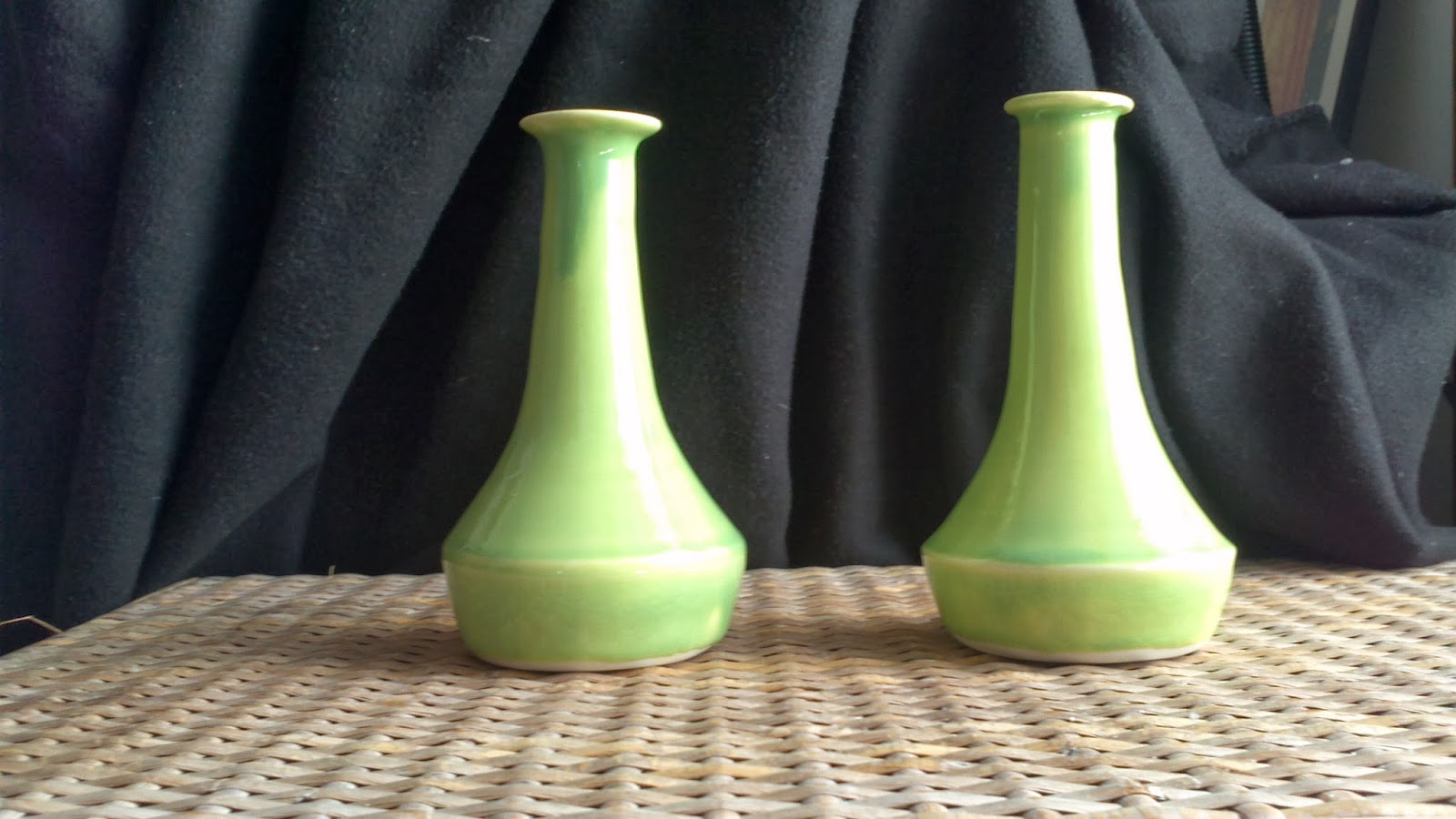A good pot has to have several qualities. I'm thinking here of functional ceramics, where use is probably primary for the person who chooses to own the pot. The basics first.
Structure: a good pot is well made.
That means reliably strong enough, not like this one
That was meant to be a pitcher. I picked it up by the handle after the first firing (not a good idea anyway, I learn, but usually ok).
And the bottom compressed enough and kept dry enough in the making, not like this one.
If it's meant to sit steady on a surface or hang flat, it does that.
Then function:
It should be the right size for the intended use. A picture won't show how big this pitcher is, but it's very different if it is to hold lemonade for six or a bit of cream for coffee.
A good pot should be stable in use. I generally like pots light in weight. A full teapot, pitcher or big mug will be heavy enough when it is picked up. Vases, though, might be better somewhat bottom heavy, as flowers are top heavy and arrangements can spread.
And then, ergonomic quality, so the pot works well with the holder's body and movements. It's about form, balance, size of the parts you come into contact with (like the handle fitting a hand). Enough about this in the past 2 posts.
And aesthetic quality. If pottery is an art, it's usually a visual art. A good pot looks good.
Here are some that inspire me.
Both pictures are, I think, from the Victoria and Albert Museum in London. So there are museum-quality looks.
Maybe you don't see these pots as wonderful. Taste makes so much difference. Here's a pot I made in a class, and dislike intensely.
It's reasonably cute, ok. Not really a pleasant glowing brown, rather a muddy khaki. I took the elephant home to photograph before throwng it out. A visiting friend claimed it immediately, and, several years later, still enjoys it.
At a recent sale, my pots were given a compliment "nice earthy colors and refinement." That I do like. I hope she was talking about this sort of pot
But I make vases for a florist who knows exactly what he wants, what he describes as contemporary, like these vases.
So are these the necessary kinds of quality: structural, functional, ergonomic, aesthetic? They fit. Are there others? I don't know. Each one certainly has a lot of parts. And I remember an old book by Richard (maybe) Bennett, called Spaces for People. He adjusted Maslow's psychological Hierarchy of Needs to buildings, which he says, need to provide good safety, function, comfort and aesthetics. That made sense to me, and actually works for the tiny buildings we call pots.
How about the order? Following Maslow, he meant the list of needs to be in order, from the most important and basic to the least important. My design students never liked that, of course. And surely they are interactive. For example, a substantial lip on a cup makes it sturdier, a structural quality, and comfortable for the drinker's lip, an aspect of function. Is one of those more important? I prefer "all of the above" as the requirement for quality.









